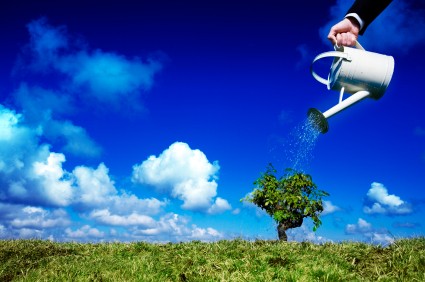
EVERYONE THESE DAYS talks about sustainability. Indeed, many corporations and jurisdictional agencies demand sustainability in structures, processes, and even landscapes. The real challenge in business, though, is convincing the unconvinced management team that sustainability goes well beyond the usual emotional “feel good” response to the issue, and indeed makes good business sense in ways that will add significant value to the bottom line.
So, what is “living asset” management and why is it important? Why is it more important than it has ever been before? Why do we need to focus on it?
Most of us are familiar with the term “asset management.” It generally deals with the management of collective investment instruments such as stocks, bonds, and mutual funds. In the area of facilities management, it involves decision-making focused on the highest value strategies for the use and care of corporate assets—taking into account the respective lifecycles of the assets.
So, just what are “living assets?” Simply put, living assets are trees, shrubs, and other vegetation purchased and placed on a piece of real estate. When cared for and nurtured properly, their value increases significantly over time. For example, it is not uncommon for that tree you planted five years ago for $65, to cost five times that amount ($325) to replace it with a like-sized specimen today…and that is just one tree. Often, an asset management firm will help clients by laying out clearly defined steps to enhance performance and reduce costs. The same is true when dealing with living assets.
It is a fiscal fact that life-cycle costs for landscape maintenance far exceed design fees and installation costs. Too often, companies are shocked to learn the costs associated with maintaining their newly completed landscaping. By applying economics as a design tool, LandEconics provides a window into projected annual landscape maintenance costs. This provides pre-emptive protection for our clients’ capital investment in landscape features, thereby preventing the costly cycle of reactive maintenance—even before the design is complete.
Sound financial decision-making goes well beyond simply calculating and reviewing the return on investment (ROI) of a sustainable landscape. Since financial resources are finite, prudent fiduciary responsibility dictates that a complete understanding of a project’s investment be reviewed in terms of the highest and best use of those financial resources. This requires an even deeper understanding of financial ‘lingo,’ including the calculation of net present value (NPV) and internal rate of return (IRR) of any potential investment or expenditure in order to ensure maximum return on the investment.
Our country is in a period of rapid change. Change is all around us—in our political system, in our economic system, in our institutional relationships, in technology, in public attitudes, in our clients’ expectations. Those responsible for landscape sustainability and management must now think about themselves differently. We must be mindful of, and fully embrace, the fact that what we decide today will have significant and long-lasting consequences, both in terms of financial and environmental results for our clients and their living assets.
The private sector uses all manner of tools to evaluate their financial health because they worry about the bottom line, they worry about margins, they worry about how much money they have to run their business, and they worry about how much profit they are going to make. And increasingly, the same can be said for the public sector.
“Living asset” managers must be constantly engaged in helping their clients understand the horticultural requirements of their specific landscape, thus enabling them to make informed financial decisions, and eliminate wastefulness through innovative landscape design and maintenance strategies. We, as ‘living asset” managers, provide tools that will serve to maximize the cost-effectiveness and sustainability of a landscape management program, ensuring that initial capital investments do indeed pay-off over the lifecycle of the landscape. As such, saving clients’ money without compromising the creativity, appearance, viability, and sustainability of their “living assets” is a real possibility that should be strived for.
We have proven time and again that “Green” principles of sustainability become dramatically relevant when tied to the financial results driven by cost-effective living asset management. In the process of doing so, we have seen a vast number of the “unconvinced” become convinced that sustainable landscapes do indeed make good business sense in ways that add significant value to the bottom line.






















